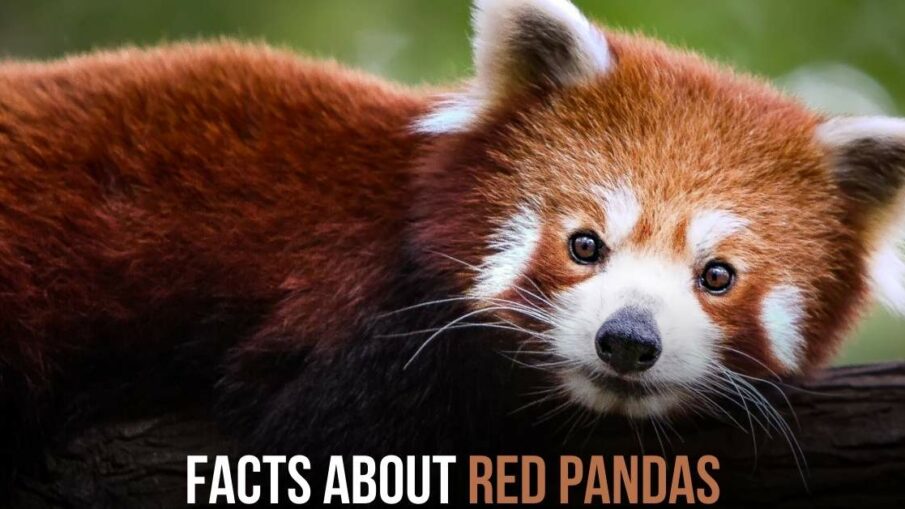Red pandas, often called the “first panda,” are remarkable creatures that captivate the hearts of many. With their distinctive appearance and intriguing behaviors, these enchanting animals have a special place in the animal kingdom.
In this blog post, we’ll dive into the world of red pandas, exploring their unique traits, and their importance in biodiversity conservation, and sharing fifteen fascinating facts that showcase their charm and significance.
1. The First Panda: Before the giant panda was even discovered, Frédéric Cuvier, a French zoologist, described the red panda as the most beautiful animal he had ever seen in 1825. This makes red pandas the original pandas, captivating naturalists long before their larger cousins came into the limelight.
2. No Relation to Giant Pandas: Despite the name, red pandas are not closely related to giant pandas. Genetic studies reveal that they share a common ancestry with raccoons, and they belong to the family Mustelidae, which includes animals like weasels and otters.
3. Bamboo Aficionados: Red pandas are primarily herbivores, with bamboo making up 98% of their diet. They consume up to 20,000 bamboo leaves a day, although their digestive system can only process about 24% of it. Their preference for bamboo is influenced by its abundance in their cloud forest habitats.
4. Many Aliases: Red pandas go by various names, including firefox, red bear-cat, red cat-bear, and the lesser panda.
5. Motherly Resemblance: Red pandas exhibit maternal behaviors reminiscent of both cats and bears. Their young are called cubs and are born between June and September. Cubs use high-pitched whistles to communicate with their mothers, who construct birthing dens and carry their offspring by the neck, similar to cats.
6. Carnivorous Heritage: Despite their bamboo-based diet, red pandas are classified as carnivores due to their evolutionary lineage. They descended from carnivorous ancestors, with fossils of the “short-snouted dog” resembling their ancient relatives found across Europe, Asia, and North America.
7. Handy “Sixth” Thumb: Red pandas possess a pseudo-thumb, an enlarged, modified wrist bone that aids in climbing trees and manipulating bamboo stems. This adaptation is a classic example of convergent evolution, where unrelated animals evolve similar features to adapt to their environment.
8. The Slumber Enthusiasts: Red pandas are known to sleep for up to 17 hours a day. They are primarily nocturnal and crepuscular, which means they are active during twilight hours.
9. Tail-Napping: Red pandas exhibit a charming habit of using their long tails, which can be as long as their bodies, as wraparound blankets during chilly nights.
10. Unusual Vocal Repertoire: While generally quiet, red pandas can produce a variety of sounds, including tweets, squeals, grunts, hisses, and even a distinctive “huff-quack.”
11. Nature’s Camouflage: Their rust-colored fur allows red pandas to blend seamlessly with the red moss, lichen, and foliage of their forest homes. The black fur on their bellies conceals them from predators below.
12. Luminescent Faces: The white fur on a red panda’s face is nearly luminescent, possibly helping lost cubs find their mothers in the dark. The reddish tear tracks from their eyes to the corners of their mouths may serve as sunshades.
13. A Stand to Impress: When threatened, red pandas will stand on their hind legs to appear larger and more intimidating.
14. Hibernate-Like Pros: In extremely cold weather, red pandas enter a state of torpor, lowering their metabolic rate, core temperature, and respiration rate to conserve energy.
15. Vertical Migrants: Red pandas migrate to lower elevations during the winter months when the temperature drops. They typically inhabit temperate forests between 4,900 and 13,000 feet above sea level.
Conclusion: Red pandas are not just adorable creatures; they play a vital role in the biodiversity hotspots of the Eastern Himalayan Broadleaf Forest Ecoregion. As a flagship species, they help protect the entire ecosystem by their conservation efforts. Understanding these fifteen fascinating facts about red pandas highlights their charm, uniqueness, and the urgency of their conservation.
By appreciating and safeguarding these “first pandas,” we contribute to the preservation of an incredible species and the delicate ecosystems they call home.


Leave a Reply